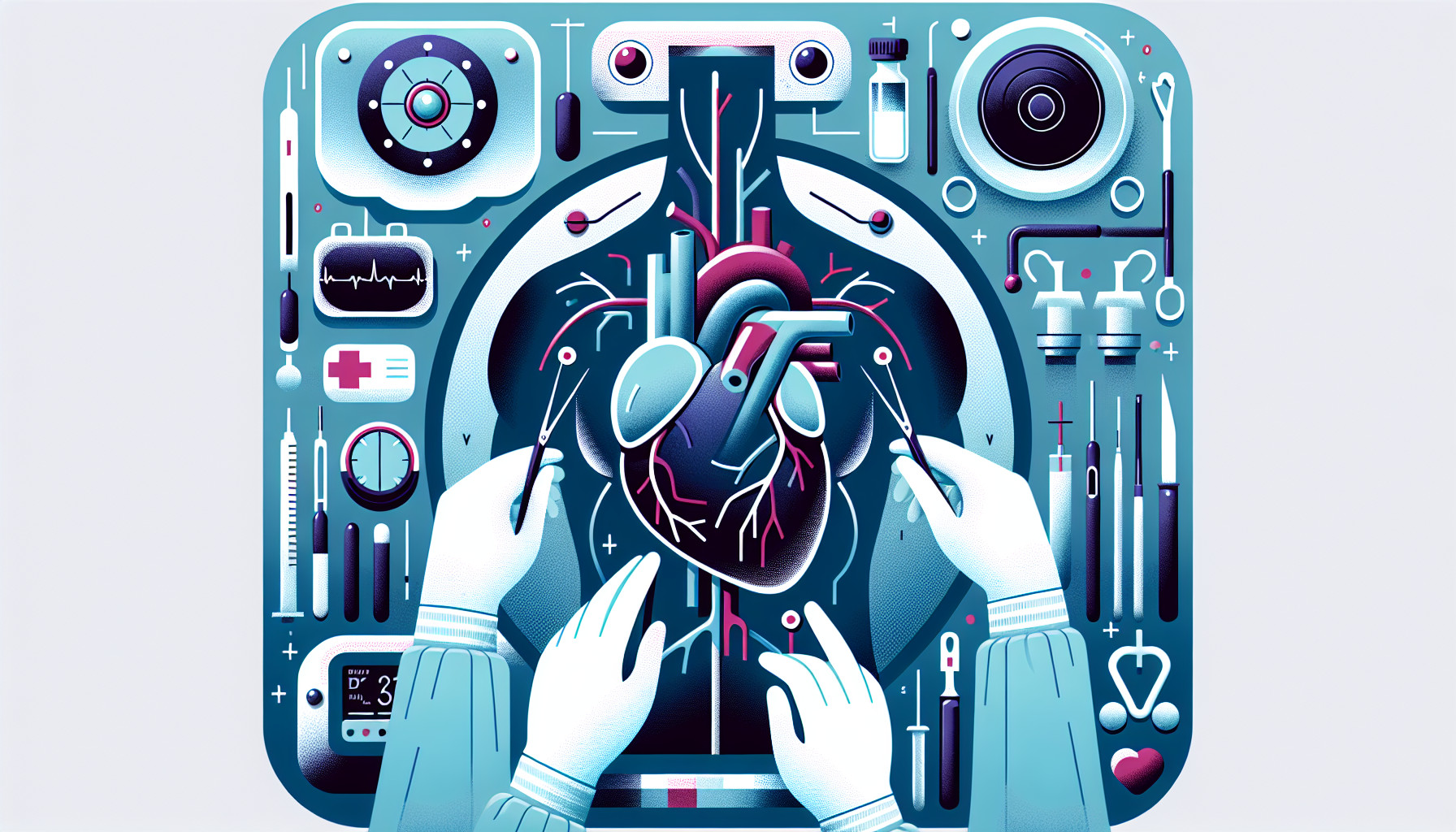Our Summary
This paper focuses on the evolution and recent developments in less-invasive methods for coronary artery bypass grafting (CABG), which is a type of heart surgery. Notably, techniques such as off-pump CABG, minimally invasive CABG, and hybrid coronary revascularization have been refined and studied.
Recent research has shown that using a ’no-touch’ technique, where the aorta isn’t manipulated, can significantly decrease the risk of stroke after surgery. Data from a 5-year study showed that there wasn’t a significant difference in death rates, the need for repeat procedures, or the main combined outcome between different techniques.
Additionally, the first large study comparing hybrid coronary revascularization and PCI (a less invasive procedure) showed no significant difference in major heart and brain events after 12 months. However, more patients who had hybrid coronary revascularization were event-free at the end of the study.
The paper highlights that minimally invasive CABG using two internal chest arteries allows for effective revascularization while preserving the breastbone. Hybrid coronary revascularization is expected to play a bigger role in the future as it enhances each form of less-invasive CABG.
FAQs
- What are the less-invasive methods for coronary artery bypass grafting (CABG)?
- What is the significance of the ’no-touch’ technique in CABG?
- What were the findings of the study comparing hybrid coronary revascularization and PCI?
Doctor’s Tip
One helpful tip a doctor might tell a patient about coronary artery bypass is to make sure to follow all post-operative instructions closely, including taking prescribed medications, attending follow-up appointments, and participating in cardiac rehabilitation. It is important to maintain a healthy lifestyle, including regular exercise, a balanced diet, and not smoking, to reduce the risk of future heart problems. If any symptoms or concerns arise, it is important to contact your healthcare provider immediately.
Suitable For
Patients who are typically recommended for coronary artery bypass grafting include those with severe coronary artery disease that cannot be managed with medications or less invasive procedures such as angioplasty and stenting. Patients with multiple blockages in the coronary arteries, especially those involving the left main coronary artery or branches of the left main coronary artery, are often candidates for CABG. Additionally, patients with diabetes, reduced heart function, or previous unsuccessful interventions may also be recommended for CABG.
Overall, the decision to recommend CABG for a patient is based on a variety of factors including the severity and location of the blockages, the patient’s overall health and medical history, and the likelihood of success with the procedure. It is important for patients to work closely with their healthcare providers to determine the best treatment plan for their individual situation.
Timeline
Overall, the timeline of a patient’s experience before and after coronary artery bypass surgery can be summarized as follows:
Before surgery:
- Patient undergoes various diagnostic tests to determine the severity of coronary artery disease and the need for surgery.
- Patient receives preoperative instructions and prepares for the surgery, including medications to manage symptoms and prevent complications.
- Patient may undergo a preoperative cardiac rehabilitation program to optimize their overall health before surgery.
During surgery:
- Patient is placed under general anesthesia.
- Surgeon performs the bypass grafting procedure, which involves rerouting blood flow around blocked or narrowed coronary arteries using healthy blood vessels from other parts of the body.
- Surgery can be performed using traditional open-heart surgery techniques or less-invasive methods such as off-pump CABG or minimally invasive CABG.
After surgery:
- Patient is closely monitored in the intensive care unit (ICU) immediately after surgery.
- Patient may need to stay in the hospital for several days to recover and receive postoperative care.
- Patient undergoes cardiac rehabilitation to regain strength and improve cardiovascular health.
- Patient follows a long-term care plan, including medications, lifestyle changes, and regular follow-up appointments with healthcare providers.
Overall, coronary artery bypass surgery can significantly improve the quality of life and long-term outcomes for patients with coronary artery disease. Advances in less-invasive techniques continue to improve the safety and effectiveness of this important procedure.
What to Ask Your Doctor
Some questions a patient should ask their doctor about coronary artery bypass include:
- What are the different types of less-invasive methods for coronary artery bypass grafting (CABG) and which one would be most suitable for me?
- What are the potential risks and benefits associated with each type of less-invasive CABG technique?
- How does the ’no-touch’ technique help reduce the risk of stroke after surgery?
- What are the outcomes and success rates of hybrid coronary revascularization compared to traditional CABG or PCI?
- How long is the recovery period for each type of less-invasive CABG procedure?
- Are there any specific lifestyle changes or medications I should consider post-surgery to maintain heart health?
- What is the long-term prognosis after undergoing a less-invasive CABG procedure?
- Are there any specific follow-up appointments or tests I should schedule after the surgery?
- How experienced is the surgical team in performing less-invasive CABG procedures?
- Are there any alternative treatment options to consider before deciding on a less-invasive CABG procedure?
Reference
Authors: Kikuchi K, Mori M. Journal: Curr Opin Cardiol. 2017 Nov;32(6):715-721. doi: 10.1097/HCO.0000000000000461. PMID: 28858911
